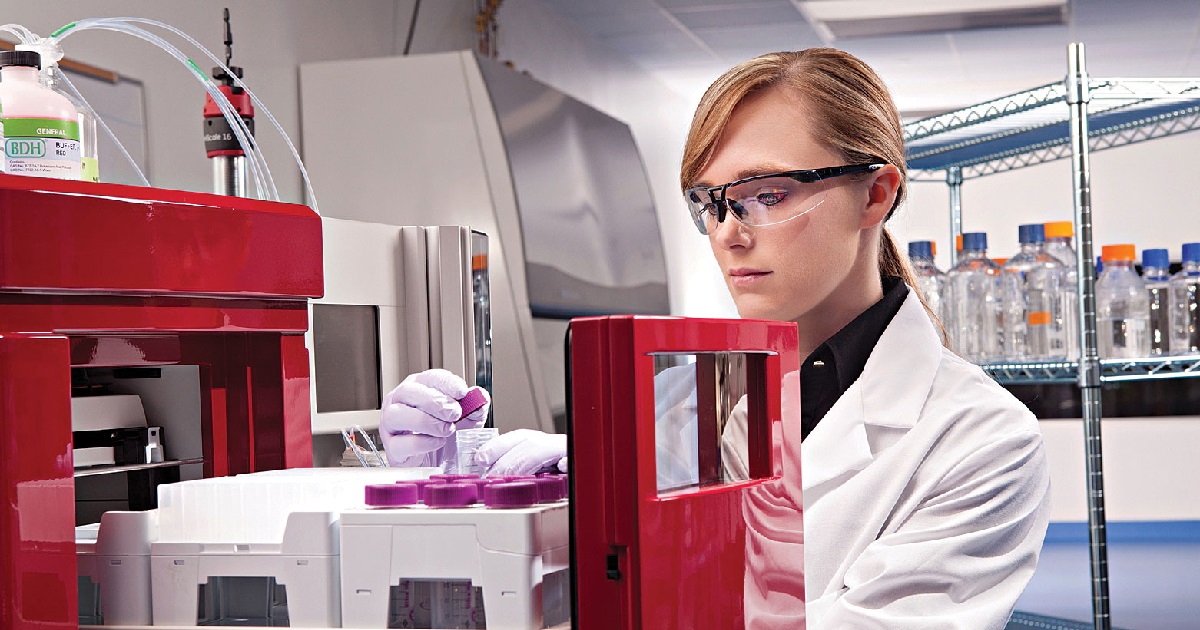
MedTech
Article | July 16, 2022
In the downstream portion of any bioprocess, one must pick through the dross before one can seize the gold the biotherapeutic that the bioprocess was always meant to generate. Unfortunately, the dross is both voluminous and various. And the biotherapeutic gold, unlike real gold, is corruptible. That is, it can suffer structural damage and activity loss. When discarding the dross and collecting the gold, bioprocessors must be efficient and gentle. They must, to the extent possible, eliminate contaminants and organic debris while ensuring that biotherapeutics avoid aggregation-inducing stresses and retain their integrity during purification and recovery. Anything less compromises purity and reduces yield.
To purify and recover biotherapeutics efficiently and gently, bioprocessors must avail themselves of the most appropriate tools and techniques. Here, we talk with several experts about which tools and techniques can help bioprocessors overcome persistent challenges. Some of these experts also touch on new approaches that can help bioprocessors address emerging challenges.
Read More

MedTech
Article | July 12, 2022
Genomics is an interdisciplinary field of biology emphasizing the structure, editing, evolution, function, and mapping of genomes. It is creating deeper inroads across the precision health domain with the increasing introduction of advanced technologies such as quantum simulation, next-generation sequencing (NGS), and precise genome manipulation.
As precision health focuses on providing the proper intervention to the right patient at the right time, genomics increasingly finds applications in human and pathogen genome sequencing in clinical and research spaces.
Rising Hereditary Diseases Burden Paving the Way for Genomics in Precision Health
In the last few years, a significant surge in the prevalence of diseases and ailments such as diabetes, obesity, baldness, and others has been witnessed across the globe. A history of family members with chronic diseases, such as cancer, diabetes, high blood pressure, hearing issues, and heart disease, can sometimes continue into the next generation.
Hence, the study of genes is extensively being conducted for predicting health risks and early treatment of these diseases. It also finds use in CRISPR-based diagnostics and the preparation of precision medication for the individual.
In addition, ongoing advancements in genomics are making it possible to identify different genetic traits that persuade people to more widespread diseases and health problems.
The Emergence of Genomics Improves Disease Understanding
Genomics refers to the study of the complete genetic makeup of a cell or organism. Increasing scientific research in the area substantially contributes to increasing knowledge about the human genome and assists in improving the ability to understand disease etiology, risk, diagnosis, treatment, and prevention. On account of these improvements, innovative genomic technologies and tools are being developed to enable better precision health not only for the individual but for various regional populations as well.
The Way Forward
With growing preference for personalized medicine and an increasing need for more accurate pathogen detection and diagnostics, genomics is gaining huge popularity across the precision health domain.
Also, increasing research activities for developing novel high-precision therapeutics and rising importance of gene study in the prevention, diagnosis, and management of infectious and genetic diseases will further pave the way for genomics in the forthcoming years.
Read More

MedTech
Article | September 22, 2022
Artificial intelligence has grasped the foundation in biotech. It can have the most innovative impact on biotechnology. AI has already established its presence in our day-to-day life. AI has made the existence of self-driving cars possible. Likewise, the benefits and quality that it can contribute to biotech can also be felt.
With AI, bio technicians will be able to enhance virtual screening, overlook preliminary datasets from clinics, and decipher an enormous amount of information. It can also help in improving the medication process by gathering and analyzing every bit of information.
The Significance of AI in Biotechnology
In the past few years, the application of artificial intelligence in the biotechnology industry has shifted from being sci-fi to sci-fact. A vast number of biotech companies like Deep Genomics are adopting AI for making data-driven decisions and use analytics tools to work efficiently.
Unlike the AI robots in sci-fi that are ready to take over the world. AI designed for biotech has been designed to solve certain problems or complete a bunch of tasks by using automated algorithms.
The aim of AI technology for biotech is to collect insights along with hidden patterns from large amounts of data. All the different industries of biotech including agriculture, animal, medical, industrial, and bioinformatics are gradually being affected by artificial intelligence.
Moreover, the biotech industry is realizing that AI enables them some of the important strength to their business, including:
Expanding accessibility
Cost-effectiveness
Critical predictions
Efficient decision-making
Research centers like PwC have also estimated output of $15.7 trillion by 2030 solely with AI contribution in industries. A survey revealed that about 44% of life science experts are using AI for R&D activities, as well.
Use of AI in Biotechnology
Altering Biomedical and Clinical Data
So far the most developed use of AI is its ability to read voluminous data records and interpret them. It can prove to be a life-save for bio technicians who would have to examine that much data from research publications by themselves for the validation of their hypothesis.
With the help of AI, clinical studies of patients will also become easier as all the examination reports and prescriptions will be stored in one place for cross-reference. Furthermore, it will also help in blending and fetching data into usable formats for analysis.
Test Result Prediction
Through trial and error, AI along with machine learning can help in predicting the response of the patient to certain drugs to provide more effective outcomes.
Drug Design & Discovery
AI plays a vital role whether it’s designing a new molecule or identifying new biological targets. It helps in identifying and validating drugs. It reduces the cost and time spent on the entire drug trial process and reaches the market.
Personalized Medications for Rare Diseases
With the combination of body scan results, patients’ body and analytics, AI can also help in detecting dangerous diseases at an early stage.
Improving Process of Manufacturing
To improve the process of manufacturing in biotechnology, AI offers a wide range of opportunities. It controls quality, reduces wastage, improves useability, and minimizes the designing time.
Moving Towards AI-Enhanced Biotech Future
Ever since the concept of artificial intelligence has arrived, being curious by nature, humans have started working towards achieving this goal. It has been growing at a fast pace while showing unbelievable growth and achievements at times. In comparison to the traditional methods used in the biotechnology industry, AI-based methods seem more reliable and accurate. In the upcoming years, it will show its success by improving the quality of health people have. You can also develop your AI-based application or know more about it by taking IT consultations.
Read More

Medical
Article | August 16, 2022
If you have ever visited the testing laboratory of a large biotechnology company, you will be aware that managing the laboratory's operations single-handedly is no easy task. The greater the size of a lab, the more research and testing activities it must accommodate.
A variety of diagnostic tests are prescribed for patients in order to detect various diseases. For example, it may include blood glucose testing for diabetics, lipid panel, or liver panel tests for evaluating cardiac risk and liver function, cultures for diagnosing infections, thyroid function tests, and others.
Laboratory management solutions such as laboratory information management systems (LIMS) and other software play a significant role in managing various operational data at biotech laboratories. It is one of the important types of software developed to address thedata management and regulatory challenges of laboratories. The software enhances the operational efficiency of biotech labs by streamlining workflows, proper record-keeping, and eradicating the need for manually maintaining data.
What Are the Benefits of Laboratory Information Management Software in Biotechnology?
As the trends of digitization and technology continue to create deeper inroads into the biotechnology sector, a significant rise in the adoption of innovative medical software solutions, such as LIMS, is being witnessed for managing research data, testing reports, and post-research results globally. Here are a few reasons that are encouraging biotech facilities to adopt LIMS solutions
Real-Time Data Collection and Tracking
Previously, collecting and transporting samples was a tedious and time-consuming task. However, the adoption of LIMS with innovative tracking modules has made the job easier. The real-time sample tracking feature of LIMS has made it possible for personnel to collect the research data in real-time and manage and control the workflow with a few mouse clicks on the screen.
Increase Revenue
LIMS makes it possible to test workflows while giving users complete control over the testing process. A laboratory is able to collect data, schedule equipment maintenance or upgrades, enhance operational efficiency, and maintain a lower overhead with the help of the LIMS, thereby increasing revenue.
Streamlined Workflow
With its completion monitoring, LIMS speeds up laboratory workflows and keeps track of information. It assigns tasks to the specialist along with keeping a real-time track of the status and completion of each task. LIMS is integrated into the laboratory using lab information, which ultimately speeds up internal processes and streamlines the workflow.
Automatic Data Exchange
LIMS solutions store data in a centralized database. Automated transfer of data between departments and organizations is one of the major features of LIMS. Through its automated information exchange feature, LIMS improves internal operations, decreases the reporting time for data sharing, and assists in faster decision-making.
Final Thoughts
As the healthcare sector continues to ride the wave of digital transformation, biotech laboratories are emphasizing adopting newer technologies to keep up with the changes.
Citing this trend, laboratory information management systems are becoming crucial for biotech and medical organizations for maintaining research data, instant reporting, and managing confidential, inventory, and financial data with centralized data storage.
Read More